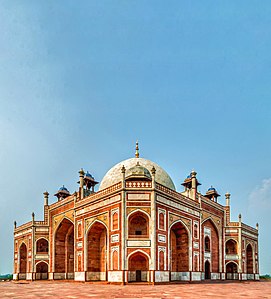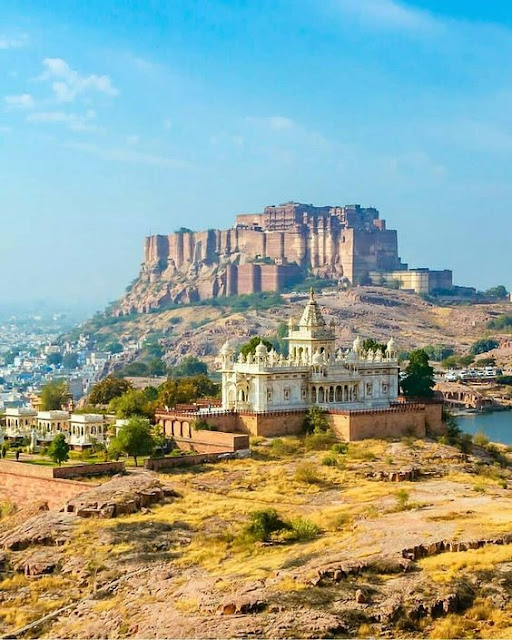Geographical Location of Bandhavgarh National Park
Bandhavgarh National Park
Bandhavgarh National Park is in the central Indian state of Madhya Pradesh. This biodiverse park is known for its large population of royal Bengal tigers, especially in the central Tala zone. Other animals include white tigers, leopards, and deer. The mix of tropical forest, Sal trees and grassland is home to scores of bird species, including eagles. To the south are the remains of the ancient Bandhavgarh Fort.
Address: Bandhavgarh, Madhya Pradesh 484661
Area: 593 mi²
Hours:
Open · Closes 10:30AM · Reopens 3PM
Established: 1968
Phone: 097524 00702
Number of visitors: 1,08,000
This place had guides that were openly beating elephants with bamboo sticks. I also saw baby elephants that were chained to their mothers and appears as though they were starving. If you are an animal lover please do not support this place and their treatment of elephants.
Hideous, cruel park! They beat (with bamboo rods) their Elephants until they fall to the ground, their screams of pain will haunt me for the rest of my life! Shocking experience! Baby Elephants are emaciated and chained up! Park should be banned from keeping any kind of animal. A shocking experience that has sent shivers down my spine and that of other visitors! AVOID AT ALL COSTS! The Mahouts working there should be sent to prison for extreme animal cruelty!
Seeing wildlife in its habitat is a goal for many travelers. A visit to Bandhavgarh National Park will not disappoint them. One of India’s most popular national parks, Bandhavgarh provides an opportunity to see leopards, barking deer, sloth bears, hyenas, and Indian bison and wolves, but Bengal tigers are the star attraction, even though only 10 percent of visitors may see one. The best time to see wildlife here is early morning or late afternoon.
Bandhavgarh National Park is one of the national parks of India, located in the Umaria district of Madhya Pradesh. Bandhavgarh, with an area of 105 km2, was declared a national park in 1968. The buffer is spread over the forest divisions of Umaria and Katni and totals 820 km2. The park derives its name from the most prominent hillock of the area, which was said to be given by Hindu Lord Rama to his brother Lakshmana to keep a watch on Lanka (Ceylon). Hence the name Bandhavgarh (Sanskrit: Brother's Fort).
This park has a large biodiversity. The density of the tiger population at Bandhavgarh is one of the highest known in India. The park has a large breeding population of leopards and various species of deer. Maharaja Martand Singh of Rewa captured the first white tiger in this region in 1951. This white tiger, Mohan, is now stuffed and on display in the palace of the Maharajas of Rewa. Historically villagers and their cattle have been at a threat from the tiger. Rising mining activities around the park are putting the tigers at risks
Statue of Shesh-Saiya at Bandhavgarh National Park
Bandhavgarh National Park is a park with a rich historical past. Before becoming a national park, the forests around Bandhavgarh had long been maintained as a Shikargah, or game preserve, of the Maharajas and their guests.
In 1947, Rewa state was merged with Madhya Pradesh; Bandhavgarh came under the regulations of Madhya Pradesh. The Maharaja of Rewa still retained the hunting rights. No special conservation measures were taken until 1968 when the areas were constituted as a national park. Since then, numerous steps have been taken to retain Bandhavgarh National Park as an unspoiled natural habitat.
Project Tiger was constituted in 1972, and then the Wildlife Protection Act of 1972 came into force. It was realized that protection of just the 105 km2 of prime Bandhavgarh habitat was enough, so in 1982, three more ranges were reduced, namely Khitauli, Magadhi, and Kallawah were reduced to Tala range (the original Bandhavgarh National Park) to extend the area of Bandhavgarh to 448 km2. As Project tiger decreased its activities and area of influence, Bandhavgarh was taken into its folds in 1993, and a core area of 694 km2 was established including the previously named ranges and the Panpatha Sanctuary along with a buffer area of 437 km2 which was declared as the Bandhavgarh Tiger Reserve.
It is a very larger wildlife sanctuary. I expected more birds and more other animals like tigers, leopards. But I have seen the only tiger at a very long distance. Again, I was told and heard that more barricades are going to be laid down shortly further very far away from the tiger's habitation. This is going to ruin the charm and attraction towards tiger sighting as it just creates a very very long view ...it is going to be watching an ant moving while the tiger moves on his way. Lol...Not more dense trees where the forest officers are responsible for planting more plants and trees in the forest.
Bandhavgarh National Park is one of the popular national parks in India located in the Umaria district of Madhya Pradesh.
This park has a large biodiversity. The density of the tiger population at Bandhavgarh is one of the highest known in India. The park has a large breeding population of leopards and various species of deer.
Bandhavgarh National Park is in the central Indian state of Madhya Pradesh. This biodiverse park is known for its large population of royal Bengal tigers, especially in the central Tala zone. Other animals include white tigers, leopards, and deer. The mix of tropical forest, Sal trees and grassland is home to scores of bird species, including eagles.
Extremely organized. Only registered jeeps can enter. Make sure to book your jeep well in advance. In the morning you will be issued one of 4 routes to take within the safari. Jeeps are not allowed to change routes and must stay on the designated path. If a tiger is spotted deep off the path, you may have an opportunity to ride on the elephant to get better views. Our driver was proactive and took us as soon as he got news of a sighting on his radio. There is no food allowed on the premises. There is a small canteen on site where you can grab some refreshments.
Bandhavgarh is one of the smallest national parks in India at under 450 sq, km and enjoys a stunning cliff-top fort overlooking the grasslands, although tourists are only allowed to visit 20% of the park which is divided into 3 zones. Bandhavgarh offers the best opportunity to see tigers, Other than tiger, we also saw a variety of birds, peacocks (some dancing), bison, elephant (with Mahaut), deer (spotted, barking, sambal), jackals, etc.







Comments